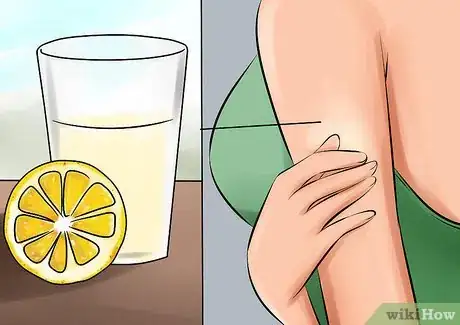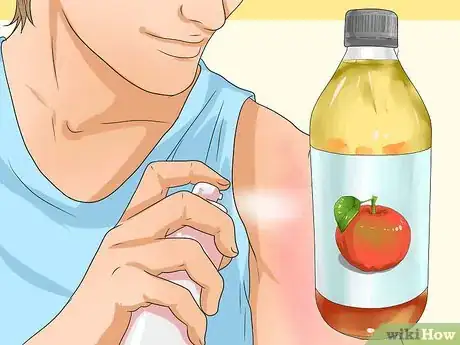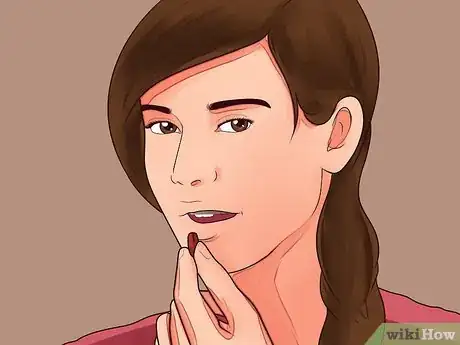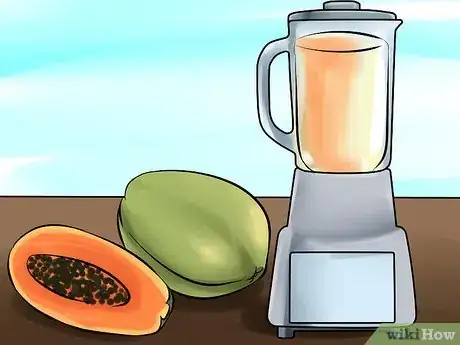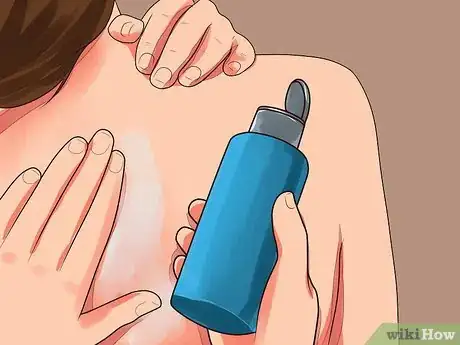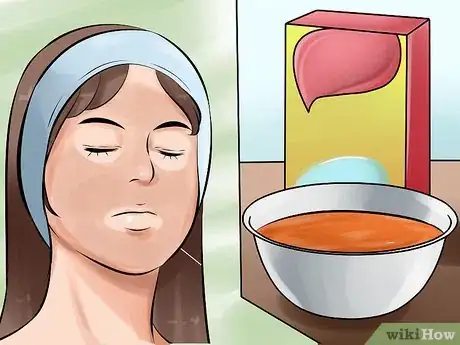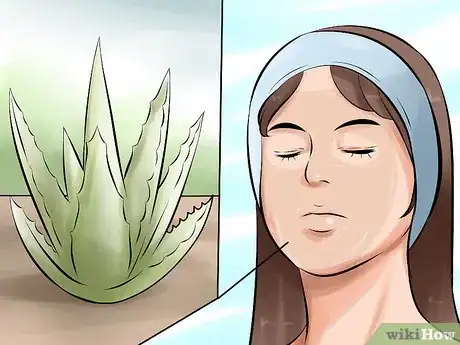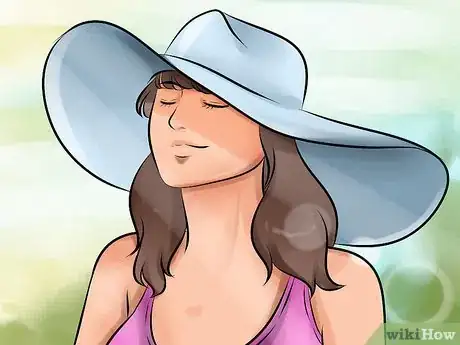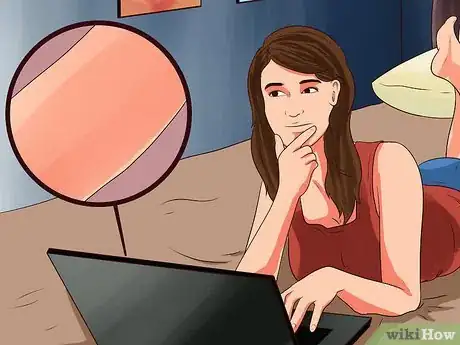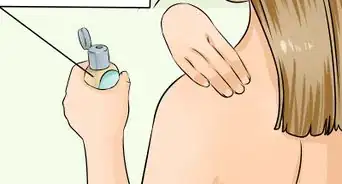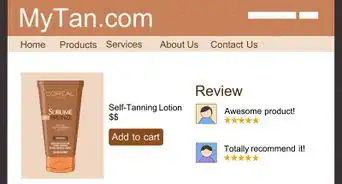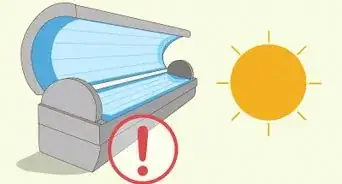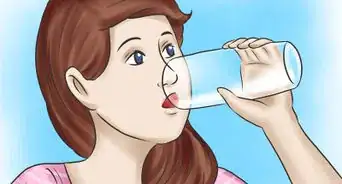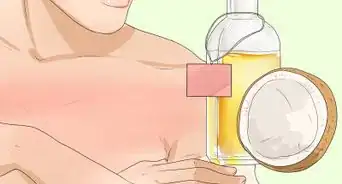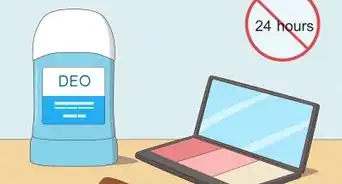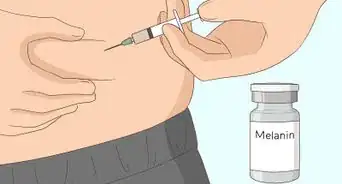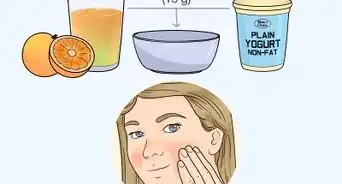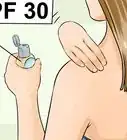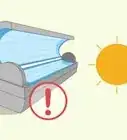This article was co-authored by Chris M. Matsko, MD. Dr. Chris M. Matsko is a retired physician based in Pittsburgh, Pennsylvania. With over 25 years of medical research experience, Dr. Matsko was awarded the Pittsburgh Cornell University Leadership Award for Excellence. He holds a BS in Nutritional Science from Cornell University and an MD from the Temple University School of Medicine in 2007. Dr. Matsko earned a Research Writing Certification from the American Medical Writers Association (AMWA) in 2016 and a Medical Writing & Editing Certification from the University of Chicago in 2017.
There are 18 references cited in this article, which can be found at the bottom of the page.
wikiHow marks an article as reader-approved once it receives enough positive feedback. In this case, several readers have written to tell us that this article was helpful to them, earning it our reader-approved status.
This article has been viewed 290,485 times.
A suntan is the result of the increased production of the skin pigment, melanin, after exposure to the ultraviolet (UV) rays of the sun. One of the normal functions of melanin is to protect the skin from UV radiation, and when you expose your skin to the sun, the reaction of the cells that make melanin, called melanocytes, is to produce more melanin. Dark skinned people get more pigment and get darker while light skinned people often turn red and burn from sun exposure.[1] If you have gotten more tan than you wanted, there are ways to reduce or get rid of your suntan at home.
Steps
Fading a Suntan at Home
-
1Use lemon juice. Lemon juice is acidic and contains vitamin C. This kind of juice has been used traditionally to lighten areas of skin. Squeeze the juice from a fresh-cut lemon into a bowl. Wet a cotton ball with the juice and apply it directly to your tanned skin. Leave the juice on your skin for 10 to 20 minutes. Rinse off the lemon juice with warm water when done. Repeat daily to keep fading the tan.
- You can also rub fresh slices of lemon along your skin to get the juice on it if you prefer.
- Even though the bleaching effect becomes stronger in the sun, it is advisable to stay out of the sun while the lemon juice is on your skin. There is no way to predict how much of a bleaching effect the sun might have. Plus, you don't want to exposure your skin to more sun than necessary, especially without sunscreen.
-
2Try tomato juice. Similar to lemons, tomato juice is also slightly acidic and it contains high levels of antioxidants. These antioxidants may react with skin pigments and lighten the suntan.[2] Take a tomato and cut it, releasing all the juices on the inside into a bowl. Take a cotton ball and apply it directly to your suntanned skin. Leave the juice on your skin for 10 to 20 minutes, then rinse it off with warm water. You can repeat this daily.
- You can apply slices of tomato directly to your skin if you wish. You can also look for 100% tomato juice in a can from the grocery store and try it.
Advertisement -
3Apply vitamin E. Vitamin E may be useful for fading a suntan because of its antioxidant activity. [3] You can get Vitamin E naturally through foods, take it as a supplement, and use it as an oil. To get it through food, eat more foods with vitamin E, such as oatmeal, almonds, peanut butter, avocados, and leafy green vegetables. Vitamin E oil can be applied directly to the skin to increase hydration in your skin and help heal the UV damage to your skin that causes suntan.
-
4Use apricots and papayas. Apricots and papayas contain natural enzymes that may lighten a suntan in some individuals. Cut slices from fresh apricots and papayas. Apply these slices of the fruit directly onto the suntan for 10 to 20 minutes. Rinse off any residual juice with warm water. Repeat daily.
- If you want to use it along larger portions of your skin at one time, you can puree the fruit and apply the paste to your skin. If you have a juicer, you can also make papaya or apricot juice and apply that to your skin.
-
5Try kojic acid. Kojic acid is derived from fungi and can lighten suntans. It has also been used to successfully treat melasma, a temporary skin darkening that occurs in pregnancy.[6] There are a number of products available that contain kojic acid, such as oils, gels, lotions, soaps, and washes. They each have different concentrations of kojic acid, so you may need to try multiple kinds to find which will help you with your particular suntan.[7]
- Try these products on a small area of skin first and follow all manufacturer’s instructions.
-
6Make a turmeric mask. Turmeric is a famous yellow spice from Asia often used in curries and dishes. Turmeric masks are used to remove facial hair, lighten and add glow to your skin, and get rid of acne on your skin. Gather 1 tbsp of turmeric powder, 1/4 tsp of lemon juice, 3/4 tbsp of honey, 3/4 tsp of milk, and 1/2 tbsp of wheat flour. Mix the ingredients in a bowl until you get a paste and use a brush or cotton ball to apply it to your skin. Leave it on for 20 minutes, or until it hardens. Wash off with warm water.
- The turmeric may leave a yellow residue on your skin. Use make up remover, toner, or a cleanser to get the color off.[8]
-
7Apply aloe to your tan. Aloe vera is a plant that has moisturizing properties. Applying aloe vera may help with inflammation and pain caused by too much sun exposure.[9] Aloe can also help to keep your skin moist and healthy, so it might help your tan to fade a little faster. You can buy aloe vera gel in the grocery store or pharmacy.
- Apply the gel two to three times per day and after you have been out in the sun.
Understanding Suntans and Sun Exposure
-
1Learn about suntans and sun exposure. Tanning is often considered a sign of health, beauty, or the ability and the time to spend time in the sun.[10] Tanning is, however, associated with skin aging and skin cancer.[11] It is also important to understand that tanning does not protect a person from sunburn.[12]
- If you are going out into the sun, wear sunscreen, especially if you are trying to avoid more getting more of a tan.
- The American Academy of Dermatology recommends a broad spectrum sunscreen with UVA and UVB protection, and that is at least SPF 30 or higher. The sunscreen should also be water resistant.[13]
-
2Get the right sun exposure to help vitamin production. Some exposure to the sun allows the skin to manufacture an important vitamin, vitamin D. To get the right amount, you should get moderate exposure of the face, arms, legs, or back from the summer sun for about five to 30 minutes. This can be done between the hours of 10 AM and 3 PM at least twice a week without sunscreen if you have darker or already tanned skin.[14] [15] If you are lighter skinned, avoid getting into the sun during peak hours and instead allow some moderate exposure to the sun outside of the peak sun hours to supply the needed Vitamin D without significantly increasing the risk of skin damage or skin cancer.
- The New Zealand dermatology association suggests that lighter skinned individuals can spend five minutes in the sun before 11AM and after 4 PM, which are the peak sun hours. Because of the light tone of their skin, lighter skinned individuals achieve healthy levels of Vitamin D during this time period. Darker skinned individuals can spend 20 minutes outside the peak hours and achieve healthy levels of Vitamin D.[16]
- The American Academy of Dermatology does not recommend any sun exposure other than the incidental exposure you might get by getting your mail, walking your dog, going between your parked car and your office, or any other normal, everyday activity.[17]
- Sunscreen does decrease the amount of Vitamin D production, but the benefits of protecting the skin are important to understand.
-
3Consume more vitamin D. Since there are so many guidelines and issues surrounding sun exposure and time in the sun, you can get your Vitamin D from other sources and avoid too much sun exposure. There are also food sources of Vitamin D, including fish and fish oil, yogurt, cheese, liver, and eggs.
- You can also try other foods and drinks that are fortified with Vitamin D, such as breakfast cereals, milk, and juice.[18]
-
4Notice the risks of skin cancer. When dealing with your skin and the sun, it is important to understand the risks of skin cancer so you can avoid them as much as possible. If you think you have skin cancer or might be at a high risk, talk to your doctor immediately to get tested or learn the best preventative measures for your particular case. Risk factors that increase your chance of skin cancer include:
- Fair skin
- A history of sunburns.
- Excessive sun exposure
- Sunny or high-altitude climates
- Pre-existing moles
- The presence of precancerous skin lesions
- A personal or family history of skin cancer
- A weakened or suppressed immune system
- Exposure to medical radiation
- Exposure to certain cancer-causing substances[19]
Expert Q&A
Did you know you can get expert answers for this article?
Unlock expert answers by supporting wikiHow
-
QuestionCan I rub lemon on the suntan?
 Chris M. Matsko, MDDr. Chris M. Matsko is a retired physician based in Pittsburgh, Pennsylvania. With over 25 years of medical research experience, Dr. Matsko was awarded the Pittsburgh Cornell University Leadership Award for Excellence. He holds a BS in Nutritional Science from Cornell University and an MD from the Temple University School of Medicine in 2007. Dr. Matsko earned a Research Writing Certification from the American Medical Writers Association (AMWA) in 2016 and a Medical Writing & Editing Certification from the University of Chicago in 2017.
Chris M. Matsko, MDDr. Chris M. Matsko is a retired physician based in Pittsburgh, Pennsylvania. With over 25 years of medical research experience, Dr. Matsko was awarded the Pittsburgh Cornell University Leadership Award for Excellence. He holds a BS in Nutritional Science from Cornell University and an MD from the Temple University School of Medicine in 2007. Dr. Matsko earned a Research Writing Certification from the American Medical Writers Association (AMWA) in 2016 and a Medical Writing & Editing Certification from the University of Chicago in 2017.
Family Medicine Physician
-
QuestionWhat do I do if none of these work for me? I tan easily and it does not go away no matter how many home remedies I do. Should I see a doctor?
 Chris M. Matsko, MDDr. Chris M. Matsko is a retired physician based in Pittsburgh, Pennsylvania. With over 25 years of medical research experience, Dr. Matsko was awarded the Pittsburgh Cornell University Leadership Award for Excellence. He holds a BS in Nutritional Science from Cornell University and an MD from the Temple University School of Medicine in 2007. Dr. Matsko earned a Research Writing Certification from the American Medical Writers Association (AMWA) in 2016 and a Medical Writing & Editing Certification from the University of Chicago in 2017.
Chris M. Matsko, MDDr. Chris M. Matsko is a retired physician based in Pittsburgh, Pennsylvania. With over 25 years of medical research experience, Dr. Matsko was awarded the Pittsburgh Cornell University Leadership Award for Excellence. He holds a BS in Nutritional Science from Cornell University and an MD from the Temple University School of Medicine in 2007. Dr. Matsko earned a Research Writing Certification from the American Medical Writers Association (AMWA) in 2016 and a Medical Writing & Editing Certification from the University of Chicago in 2017.
Family Medicine Physician
References
- ↑ https://www.aad.org/dermatology-a-to-z/for-kids/about-skin/skin-cancer/what-causes-a-sunburn-and-suntan
- ↑ http://www.sciencedirect.com/science/article/pii/S0308814603001651
- ↑ http://www.annualreviews.org/doi/abs/10.1146/annurev.nu.10.070190.002041?journalCode=nutr
- ↑ http://www.md-health.com/Vitamin-E-Oil.html
- ↑ http://www.goodhousekeeping.com/health/diet-nutrition/g2079/top-sources-vitamin-e-44111408/?thumbnails
- ↑ Lim, J. T. E., Frcpi and Fams (1999), Treatment of Melasma Using Kojic Acid in a Gel Containing Hydroquinone and Glycolic Acid. Dermatologic Surgery, 25: 282–284
- ↑ http://www.ebay.com/gds/How-to-Apply-Kojic-Acid-Cream-on-Face-/10000000205276543/g.html
- ↑ http://skinverse.com/turmeric-lightens-brightens-skin-and-reduces-pigmentation/
- ↑ http://www.mayoclinic.org/drugs-supplements/aloe/safety/hrb-20058665
- ↑ http://www.skincancer.org/prevention/tanning/is-a-tan-ever-a-good-thing
- ↑ http://www.fda.gov/Radiation-EmittingProducts/RadiationEmittingProductsandProcedures/Tanning/ucm116432.htm
- ↑ http://www.skincancer.org/prevention/tanning/is-a-tan-ever-a-good-thing
- ↑ https://www.aad.org/media/stats/prevention-and-care/sunscreen-faqs
- ↑ https://ods.od.nih.gov/factsheets/VitaminD-HealthProfessional/
- ↑ Wolpowitz D, Gilchrest BA. The vitamin D questions: how much do you need and how should you get it? J Am Acad Dermatol 2006;54:301-17
- ↑ http://www.dermnetnz.org/systemic/vitamin-d.html
- ↑ https://www.aad.org/media-resources/stats-and-facts/prevention-and-care/vitamin-d-and-uv-exposure
- ↑ https://ods.od.nih.gov/factsheets/VitaminD-HealthProfessional/#h3
- ↑ http://www.mayoclinic.org/diseases-conditions/skin-cancer/basics/risk-factors/con-20031606
About This Article
To get rid of a suntan at home, try lightening the skin by rubbing it with fresh lemon juice using a cotton ball. Alternatively, apply tomato juice, which has high levels of antioxidants that can help lighten your tan. Leave the lemon or tomato juice on your skin for 10 to 20 minutes, then rinse off with warm water. Make sure to repeat the process daily until your tan fades. Additionally, limit your exposure to the sun by using a broad spectrum sunscreen with an SPF of 30 or higher. For more advice from our Medical reviewer, including how to fade a suntan with Vitamin E and aloe vera, keep reading.
